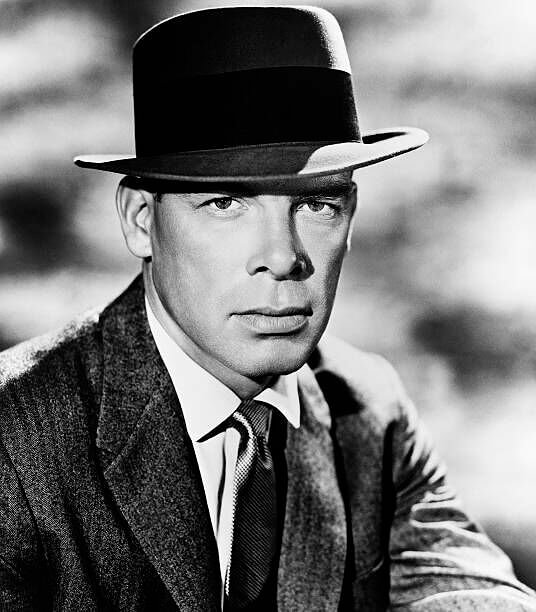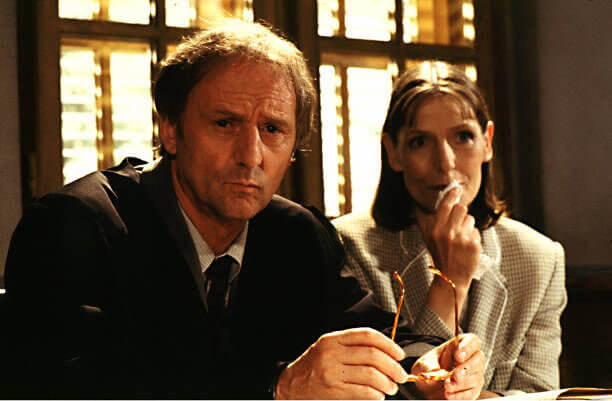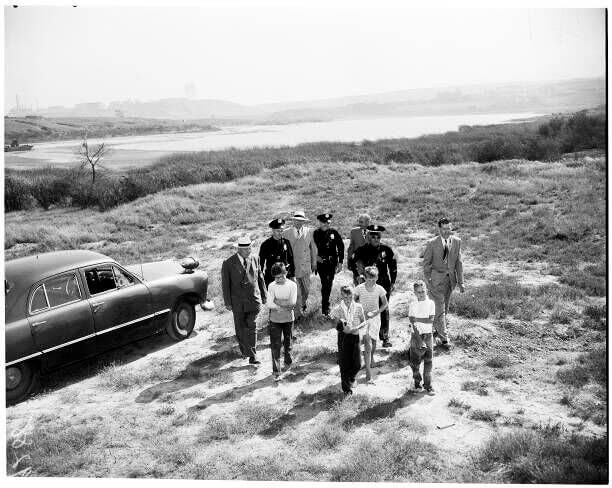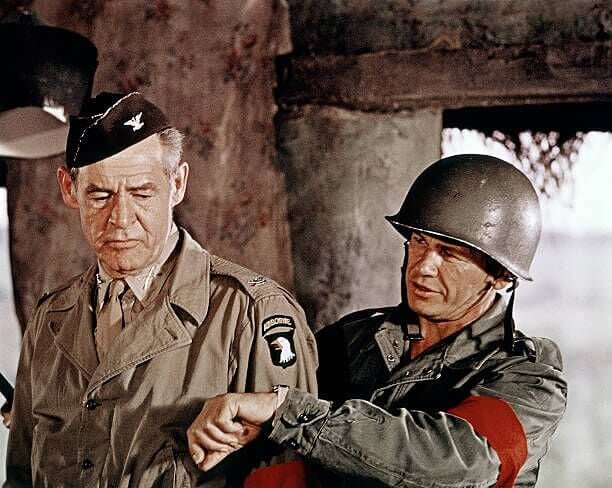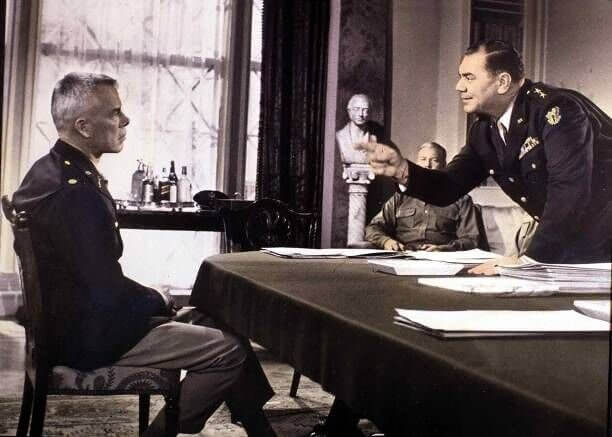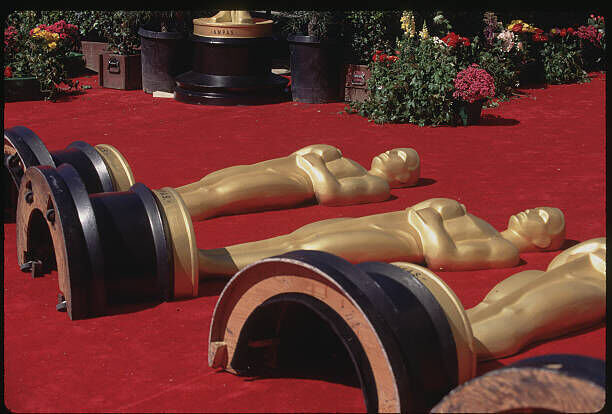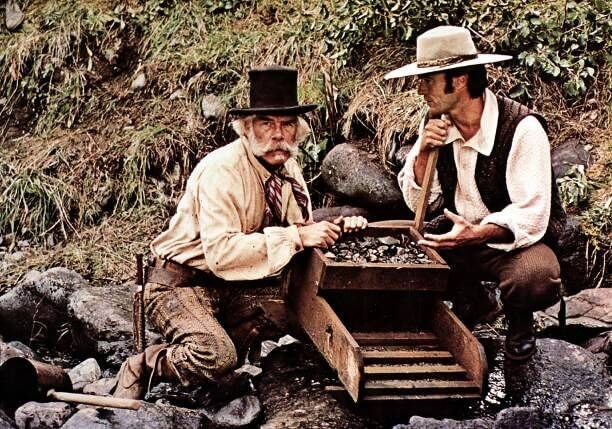In 1967, MGM adapted a war novel written by E. M. Nathanson and it changed the face of war movies forever. “War is hell,” was the overriding message which came from this all-star movie directed by Robert Aldrich.
The Star Didn’t Rate It
Lee Marvin, the highest billed of a major ensemble cast in The Dirty Dozen, though the movie was entertaining but not much more than that. He didn’t feel the film did a particularly good job of portraying the realities of war, and he should know, he was a World War II veteran with seven medals, including a Purple Heart.
The actor, who played the main character of Major John Reisman, summed the movie up with one short, harsh sentence: “Just a dummy money-maker.”
It Ended A Career
Jim Brown played at fullback in the NFL for the Cleveland Browns from 1957 to 1965, but he was supposed to keep playing until 1966. Brown had one year of his contract left but was beginning to dabble in acting. The Dirty Dozen was his first major movie and involved filming in London.
Production delays meant that Brown’s commitments to the movie began clashing with his commitments to the Cleveland Browns. The club’s chairman wasn’t willing to put up with this and told Brown he had to get back or he would be fined heavily. Brown decided not to go back at all, and retired from football there and then.
Built Too Well
It’s not often you find a constructor that will over-deliver, and you’d think when a building was literally designed to be destroyed it might be a great excuse to cut even more corners than usual.
This was not the case for the set designers on The Dirty Dozen, when it came to blowing up the chateau, they found it had been built so well it would take about 70 tons of dynamite to bring it down the way they hoped. Instead, the crew had to quickly build a much cheaper and less sturdy section of the chateau to destroy for the cameras.
Strange Sounds
“Three wise men, trust the major,” are the words that film audiences heard when John Cassavetes, who played Victor R. Frank, spoke in one scene. Charles Bronson’s character, Joseph Wladislaw, had just suffered a beating when the words were uttered.
The thing is, Cassavetes’ mouth looks kinda odd when uttering the words. Is the camera looking at the wrong mouth, or has something gone badly wrong in the edit? Perhaps they just decided to throw in a strange ventriloquist act to lighten up the mood.
Not the Face
“Don’t hit him in the face, Sean. He’s got his close-ups tomorrow.” It’s not a line that will diffuse every fight, but Kenneth Hyman, The Dirty Dozen’s producer, will be glad it did one night in London. Lee Marvin had helped himself to a few drinks at a party and made an inappropriate comment to an older woman in attendance.
It turned out she was the aunt of James Bond himself, Sean Connery. Connery immediately took exception to Martin’s behavior and, if it hadn’t been for Hyman’s quick thinking, the makeup team might have had their work cut out for them the next morning.
A Meaningful Bell
Filmmakers are famous for putting little hidden meanings, known as 'Easter Eggs', in some of the scenes. In this case, the easter egg wasn't a visual one, but one you needed to hear, which might have been tough to spot if you don’t know the background.
The doorbell of the castle doesn’t just ring, it plays ‘da, da, da, daaa’ or dot-dot-dot-dash. When translated into morse code, it represents V for victory. It’s also the famous opening to Beethoven’s 5th Symphony, a german tune that was adopted by the allies in World War II.
Swinging London
Many of the stars of The Dirty Dozen loved their time in the British capital and took advantage of the nightlife and attractions of the city. Director Robert Aldrich, however, was much less keen.
The British style of working didn’t suit him and he often found himself frustrated at being forced to slow his usually quick style down to match the pace of the local crew. While his actors might have been having a great time, he was glad to get back to working in his native USA.
Real Experience
Lee Marvin wasn’t the only member of the cast to have real military experience. Seven of the men in The Dirty Dozen had previously served for their country. Robert Ryan and Clint Walker had both served as marines during the final months of World War II.
Charles Bronson was part of an Air Force bombardier squadron who flew over Japan, he received a Purple Heart for injuries he sustained. George Kennedy and Telly Savalas served in the United States Army and Ernest Borgnine had a naval career lasting almost ten years.
Close Shaves
When it came to nen’s hairstyles in the 60s, long hair was far from uncommon. Being men of the era, many of the actors were quite attached to their modern locks, so there was a little resistance when Robert Aldrich informed them they would be visiting the studio barber to have their heads brought more in line with the military crew cuts which would have been expected of their characters.
Lee Marvin had no trouble jumping in the chair, but some of the others needed to be threatened with legal action before they submitted to the dreaded shaver.
Modern Styles
Those who know their fashion trends through the decades of the 20th Century may spot something interesting about the women in The Dirty Dozen. While the male stars were forced to adopt the harsh haircuts of the 1940s military, Robert Aldrich made no such demands of the female cast members or extras.
Of course, it’s the soldiers who are the focus of the movie, but being a director is all about the details. It might not seem so obvious to modern eyes but, in the 1960s, when the movie was released, it would have been very clear the women’s hairstyles were much more contemporary than they should have been.
Magic Glass
War is chaos, and it can be hard to keep up with what’s going on from one minute to the next, but there is one fairly firm rule. When something is destroyed, it stays destroyed. The Makers of The Dirty Dozen seem to have found a magic trick to reverse that though. Amongst the continuity errors in the film, one involves a surprising windscreen restoration.
Audiences can see Joseph Wladislaw, played by Charles Bronson, jumping behind the wheel of a jeep with no windscreen, then in the next shot, the glass is back and intact. Now that’s a neat trick.
Noble Duke
Lee Marvin played the lead character of Major John Reisman in The Dirty Dozen, but he wasn’t the only choice for the role. Producers first approached another Hollywood legend who they felt would be perfect, but he didn’t like something the script called for him to do.
“The Duke” John Wayne has offered the part, but he took one look at the movie and realized his character would be required to have an affair with a British woman whose husband was away on active duty. That didn't sit right with Wayne, so he walked away. Marvin, it seems, was fine with it.
An Animated Reunion
Ernest Borgnine, Jim Brown, George Kennedy, and Clint Walker were reunited in their roles twenty years after The Dirty Dozen was released. They even delivered some of their original lines. Audiences never saw their faces on screen though, instead, they saw little CGI versions of them.
The movie was Small Soldiers, a 1998 CGI and puppetry feature made by Dreamworks which also starred Kirsten Dunst and Tommy Lee Jones. Sadly, some other original cast members died before they were able to contribute to the vocal reunion.
What Shall We Do With a Drunken Actor?
On one day of filming in London, Lee Marvin failed to arrive on set for his scene, so his fellow cast member Charles Bronson set out to search for him. Marvin was found in a bar, far too drunk to perform.
Bronson began pouring coffee down Marvin’s throat in a vain attempt to sober him up but it didn’t work. Bronson became so angry at the errant star that he threatened to kill him. When they finally arrived at the set, Marvin fell out of the car.
Practical Joker
While John Aldrich might not have been particularly enjoying his time in London and was dealing with actors who were frustrated at being forced to have their heads shaved, he did still find time to have a little fun.
During one scene in which the men lined up for inspection, Aldrich arranged them with Clint Walker and Donald Sutherland stood either side of Charles Bronson. Bronson stood only five feet nine inches tall, while the other two men were six feet and four inches. Reportedly, Aldrich thought the image was hilarious.
Too Bloody
Not only had Charles Bronson undertaken actual military service, but he’d also spent his entire career playing hard men in mob movies, war movies, and even as a boxer. So it’s a bit of a surprise to learn that he became squeamish about The Dirty Dozen.
Bronson left one screening midway through due to the amount of blood on screen and, all in all, he felt the movie was too violent. The director must be doing something extreme to make a tough guy like Charles Bronson react that way.
Sequels and Spinoffs
1998’s Small Soldiers wasn’t the only time members of The Dirty Dozen’s cast reprising their roles. Though a “kind of sequel” Too Late to be a Hero was released by Robert Aldrich in 1970, the first official TV movie sequel didn’t come until 1985 when Next Mission featured Lee Marvin, Ernest Borgnine, and Richard Jackal.
1987 brought Telly Savalas back for The Deadly Mission, though he played a different character. Borgnine and Savalas came back together a year later for The Fatal Mission in 1988. Fox also broadcast an 11 episode TV series in 1988, but none of the original cast was included.
What’s in a Name?
Even for those who have never seen the movie, The Dirty Dozen is now a classic film title that has seeped into public consciousness the world over, but that name nearly didn’t exist. Early in production the cast and crew were working under a slightly longer title: “Operation Dirty Dozen”.
It does the same job, and it nods more to the military aspect, but it doesn’t roll off the tongue quite as well. It could have been worse though, the original 101st Airborne division the screenplay was based on was nicknamed the “Filthy Thirteen”.
Model Hero
Lee Marvin found inspiration for his performance in The Dirty Dozen while serving with the 4th Marine Division of the United States Marine Corps in World War II, but it wasn’t just his personal experiences of war that he took from.
During his time in the Pacific Theater, Marvin became friends with a Massachusetts-born man named John Miara. It was this man upon which Marvin based most of his character when he filmed The Dirty Dozen more than 20 years later.
Early Exit
Trini Lopez left the filming of The Dirty Dozen early. His time on the production was cut short and his character’s death was written to occur off-screen so he wasn’t required to perform it. The initial death planned for Lopez’sAward-nominated character, J. Pedro Jimenez, was given to someone else.
There are differing rumors as to why Lopez returned home prematurely. One is that his agent had tried and failed to have the actor’s pay increased. Another is that Lopez, as a successful singer, was worried about how the time away would affect his career and, in the end, Frank Sinatra told him to walk out and get back to the stage
Last Supper
We’ve all seen the famous painting by Leonardo Da Vinci representing The Last Supper of Jesus Christ and his disciples, but did you notice the scene was replicated in The Dirty Dozen.
Just before the twelve soldiers depart for their final mission, they join together in the guard’s quarters for a meal. All 12 men sit on the same side of a long table in an image incredibly reminiscent of the biblical painting. A very evocative moment before they head out into the field.
An Unfortunate Name
For 36 years, between 1939 and 1975, Spain was under the rule of the nationalist dictator, General Francisco Franco. This seems a strange thing to affect the content of an American movie but, in the case of The Dirty Dozen, it did.
In the version of the film most countries watched, John Cassavetes' character was named Victor R. Franko. This name was too similar to that of General Franco’s to use in Spain, so for the dubbed version released in that country, it was changed to Franchi.
Sound of Silence
Another flaw in the edit of The Dirty Dozen can be spotted when music mysteriously disappears. Trini Lopez is allowed to use his musical talents in the movie when his character, J. Pedro Jimenez brings out a guitar to entertain his fellow soldiers.
There is something strange about the instrument though, while it does play music for some of the time, it can very clearly be seen, but not heard, being strummed in one shot. Unless that was the sound editor's subtle criticism of Lopez’s playing.
The Greatest Visitor
On August 6, 1966, Muhammad “The Greatest” Ali visited the U.K. to fight the Englishman Brian London at the city of London’s famous Earl’s Court Arena. This just so happened to be around the same time that The Dirty Dozen was being filmed.
Amongst the cast was a good friend of Ali’s, the football player Jim Brown. During a break from training, Ali went down to visit his friend and the cast of the movie. The actors took photos with the boxer, who later went on to win his fight by knock-out in the third round.
Oscars Galore
To give you an idea of the quality of the cast assembled for The Dirty Dozen, you just have to look at the awards piled up between them. Lee Marvin won an Academy Award for Best Actor, amongst many other trophies, for his part in Cat Ballou. Ernest Borgnine took an Oscar, a BAFTA, and a Golden Globe for Marty.
George Kennedy joined the club when he picked up the Best Supporting Actor Oscar for his role as Dragline in Cool Hand Luke. Richard Jaekel, John Cassavettes, Telly Savalas, and Robert Ryan are all Academy Award-nominated actors too.
Old Heads
For male actors in Hollywood, age has never exactly been a barrier to roles. The character is much younger than the actor is rarely considered a problem, something particularly noticeable in movies featuring a cast who are supposed to be high school kids.
Action films often go the same way, with studios preferring the safety of an established star, regardless of their advancing years. War movies often manage to keep things a little more in sync, but not in the case of The Dirty Dozen. Most of the cast are in their 40s, most of the characters are in their 20s.
Integrity Over Awards
There is a particular scene in The Dirty Dozen where Robert T. Jefferson, played by Jim Brown, throws a live grenade into a German bunker filled with civilians; it’s violent and it’s harrowing. It was mentioned to the director, Robert Aldrich that this movie might be the one that earned him a coveted Best Actor statuette from the Academy if he took out that scene.
Aldrich thought about it, and the “war is hell” message he was trying to convey and left the scene in. No Oscar nomination came his way.
Big Changes From the Source
As a movie, The Dirty Dozen focuses heavily on the top-secret mission that the 12 conscripted convicts undertake. The screenplay was inspired by a novel that had been written by E. M. Nathanson and had quickly become a bestseller after it was published in 1965.
With just a few years between studio execs getting their hands on the book and the cameras beginning to roll, you might think there wouldn’t be enough time for the second to differ too much from the first, but you’d be wrong. The vital mission is barely mentioned until the final chapters of the book.
Vanishing Soldier
Samson Posey, played by Clint Walker, offers something of a mystery to audiences of The Dirty Dozen. Most filmgoers like things to be resolved, whether it’s the main plot or simply what happens to each character.
Not every death or resolution is clearly shown in this movie, but most are at least indicated. We don’t actually see the death of Ben Carruthers’ character, S. Glenn Gilpin, but we can guess from the exploding roof that he probably did. Posey, on the other hand, just disappears without any explanation.
Reasons Behind the Name
The Dirty Dozen were given that collective name due to their situation when they are recruited. All 12 men are convicted criminals with heavy sentences. Five are sentenced to death by hanging, five too long terms of hard labor, and two were facing at least twenty years each in prison. They are recruited to the task force because it was considered by many to be a suicide mission.
The real division which inspired the novel was nicknamed for a much less dramatic, but still not particularly pleasant, reason. The “filthy thirteen” were paratroopers who had little time to wash or shave during their duties.
The Launch of a Career
Donald Sutherland wasn’t the first choice actor to play Vernon L. Pinkley and was only given the part when another actor turned it down. Before The Dirty Dozen, Sutherland had only played a few minor film roles and one-off TV appearances, afterward, well, he became Hollywood legend, Donald Sutherland.
It’s believed his performance in The Dirty Dozen, particularly in a scene where he impersonates a general, earned Sutherland his role in M*A*S*H, after that he became Oddball in Kelly’s Heroes, and the rest is history.
Stickler for Accuracy
Whether it be continuity, audio, or haircuts, there are certainly plenty of errors in The Dirty Dozen. When it comes to the military elements, however, one man took it upon himself to make sure things were just right. Lee Marvin even found himself arguing with director Robert Aldrich on some occasions.
One particular dispute came when Marvin took objection to the plausibility of two men fighting over a bayonet. Marvin felt in a good position to make his case, after all, he had served in World War II, Aldrich had not.
Nobody Is Innocent
War films from any country are notorious for telling the story from the perspective of their own heroes, and perhaps of glossing over some of the less honorable things their own troops might have done. As the world movie-producing superpower, the USA can be particularly guilty of this.
The Dirty Dozen was groundbreaking in this respect as one of the first films to portray American soldiers committing abhorrent acts and even war crimes, such as throwing a grenade into a bunker full of German civilians.
Haunted Whiskey
We all get confused and make mistakes when we're drinking, but does that explain the mysterious events we see in one particular scene in The Dirty Dozen? Major John Reisman, played by Lee Marvin, and Captain Stuart Kinder, played by Ralph Meeker, get involved in an intense discussion about the dozen, and whiskey is both present and drunk.
Strangely though, at one point a canteen appears out of nowhere. The men’s glasses also move around without being touched. Well, they do call it a spirit!
Two Directors
When The Dirty Dozen was green-lit by MGM in 1964, before E.M. Nathanson's novel was even published, it wasn’t Robert Aldrich who they first attached to direct. Their preferred man was George Seaton who had over 25 years of experience since working on A Day at the Races with the Marx Brothers in 1937.
Though Seaton had directed war movies, he was best known as the director of Miracle on 34th Street. Aldrich, however, had a pedigree built on war films, Westerns, and gritty crime movies. When he threw his hat into the ring, the studio knew they had the right man.
The movie was a hit that is still remembered today, but it wasn’t all smooth sailing. Here are 35 things you might not know about The Dirty Dozen.

